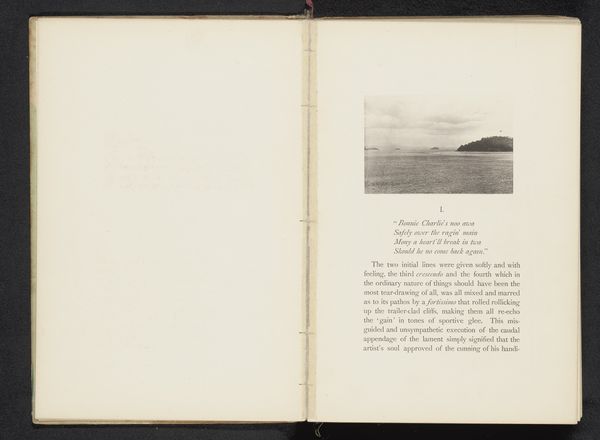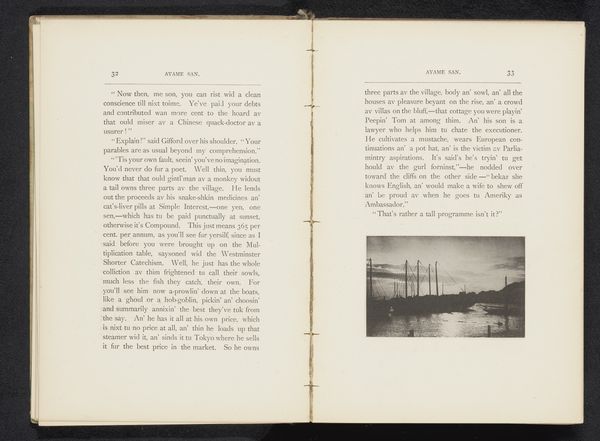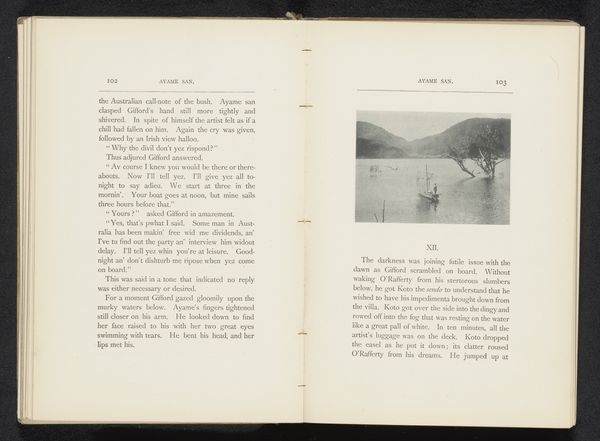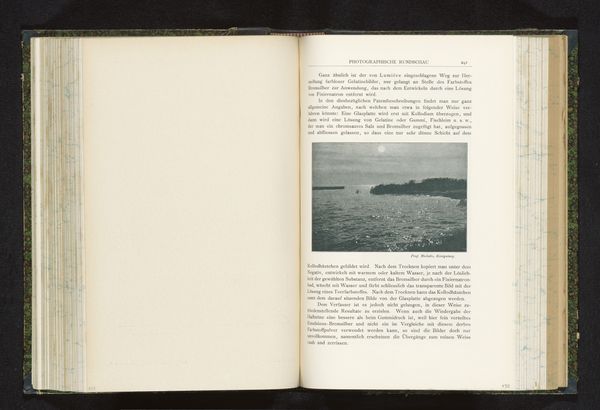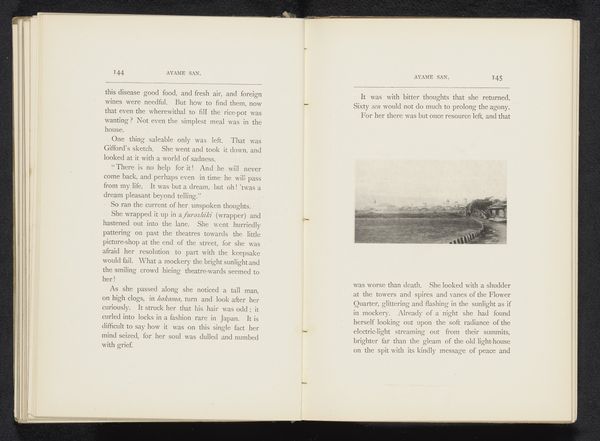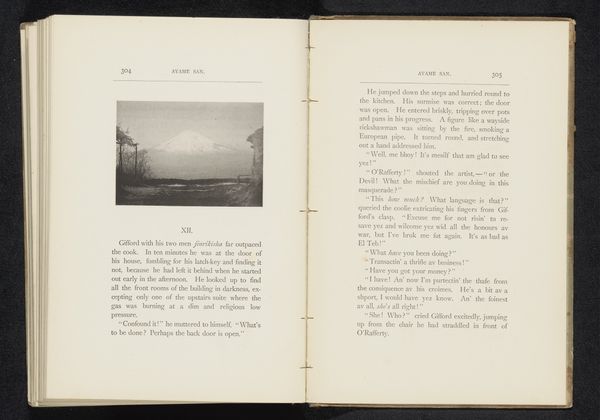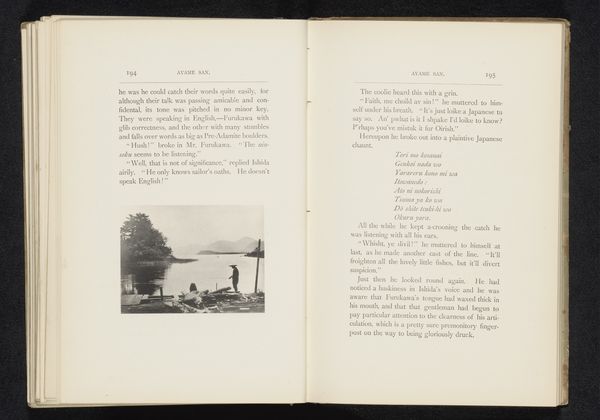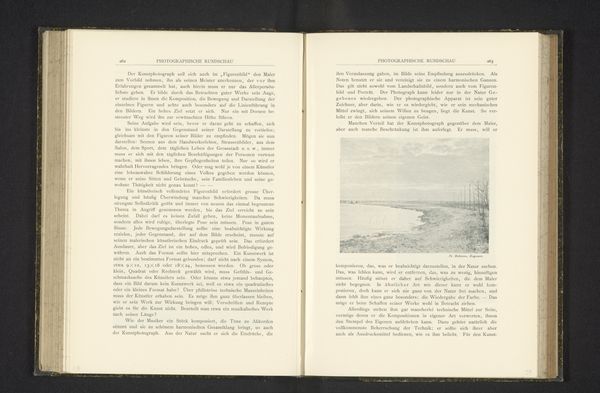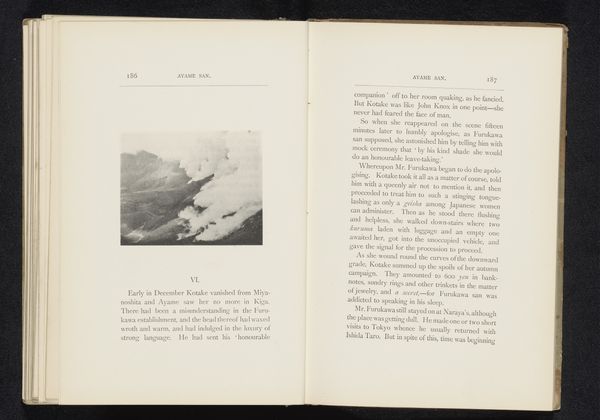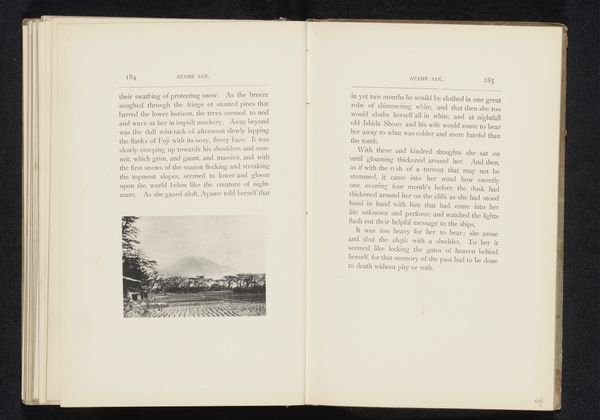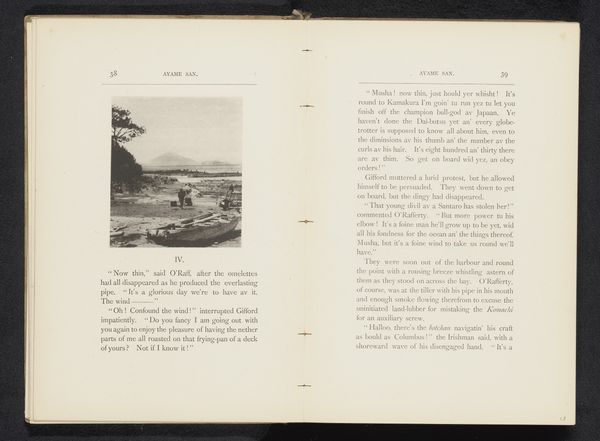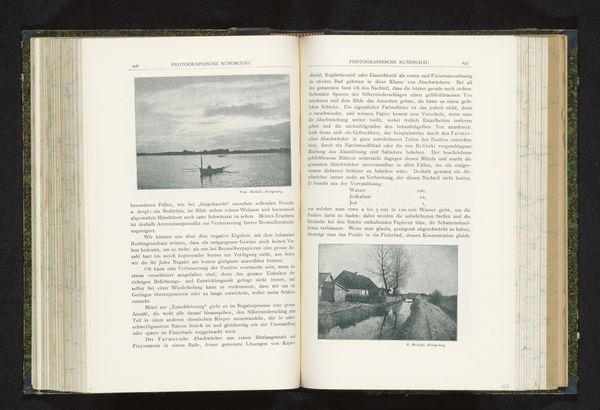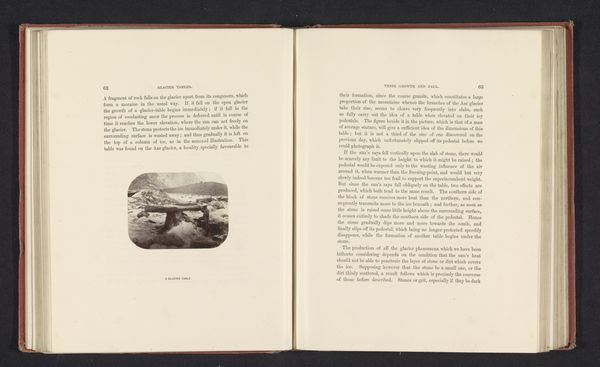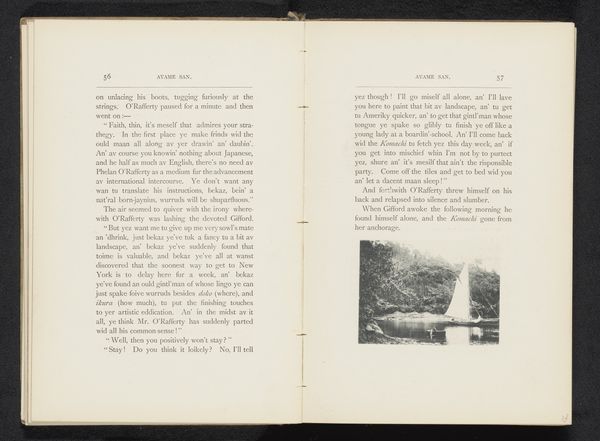
Dimensions: height 52 mm, width 83 mm
Copyright: Rijks Museum: Open Domain
Curator: Before us, we have an albumen print dating to before 1892 by William Kinnimond Burton, titled "Gezicht op een kaap te Japan, met op de voorgrond boten," or "View of a Cape in Japan, with Boats in the Foreground". Editor: It's rather stark, isn’t it? Somber even, despite depicting a seascape. The high contrast between the dark landmass and the pale sky lends a feeling of isolation. Curator: Burton’s photography is often situated within the social context of late 19th-century Japan during its rapid modernization and engagement with the West. As an architectural engineer and a visiting professor in Japan, Burton offers a visual document reflecting Japan’s opening to global trade and its socio-cultural shifts. He attempts to grapple with notions of cultural exchange, and maybe also, a certain level of alienation. Editor: Yes, that’s a useful framing. The print has some of the characteristics of Ukiyo-e. Though photographs rather than woodblocks, its use of stark compositions to convey elements in the Japanese landscape certainly calls to mind Hokusai. I am thinking in particular about his use of the foreground to highlight cultural production or a historical narrative. Curator: Absolutely. And the inclusion of boats—both Japanese and possibly foreign vessels—foregrounds that contact and transformation. As photography, the print embodies technological and cultural interactions. It’s also hard to avoid viewing the image without a sense of Western gaze and documentation. We are essentially viewing this vista through a colonial lens, even though it may represent an aesthetic appreciation, or genuine intercultural awareness. Editor: A complex negotiation, indeed. Burton's work gives us much to unpack about looking, about framing, and about power. We get some appreciation of how identities of the Japanese at the time intersected and how that landscape may have been perceived as political as much as natural. Curator: It gives you something to think about even now, as our engagement with images remains deeply political. Editor: Agreed. And perhaps that melancholy isn’t about isolation so much as about observing irreversible transformation.
Comments
No comments
Be the first to comment and join the conversation on the ultimate creative platform.
